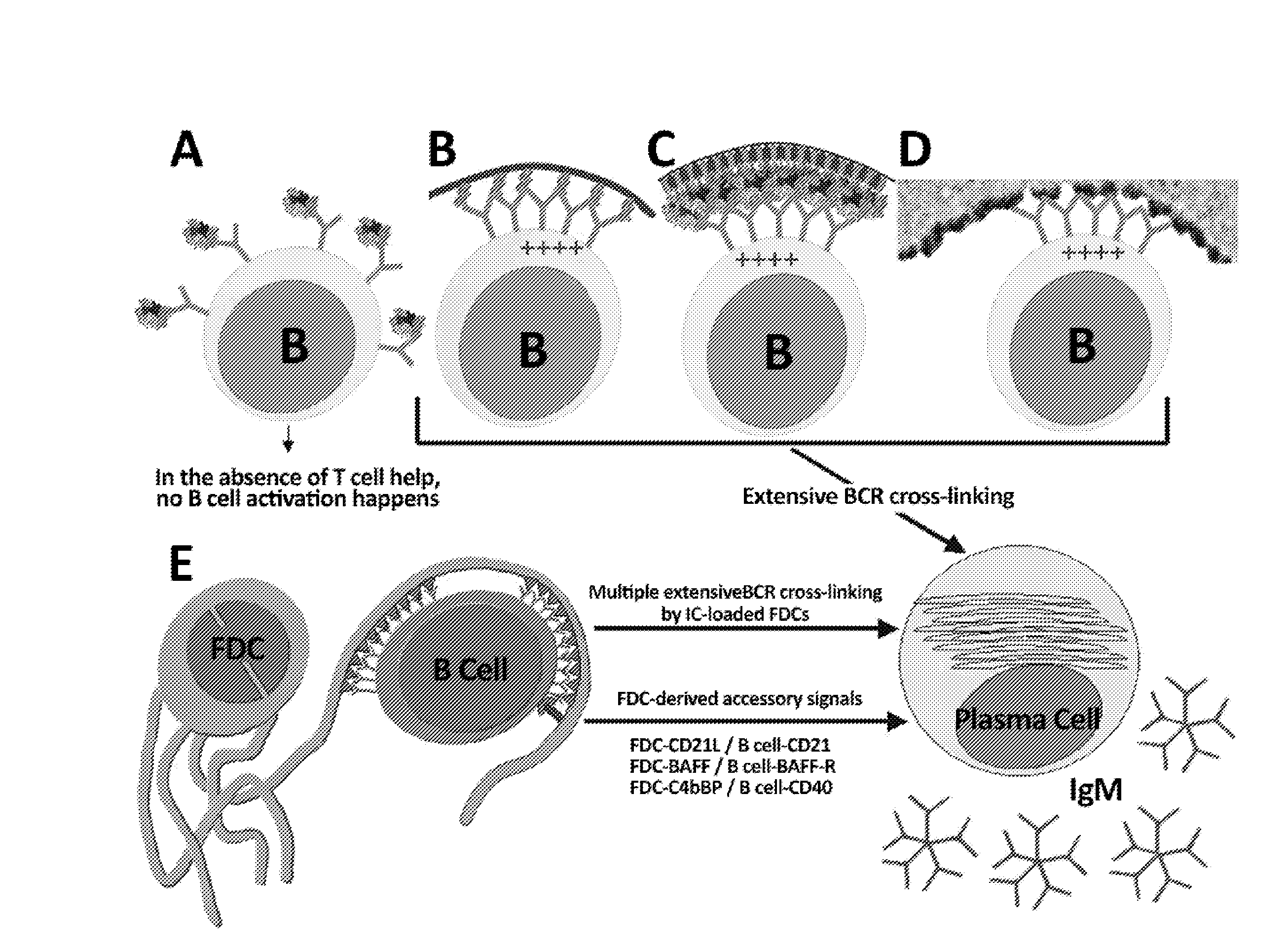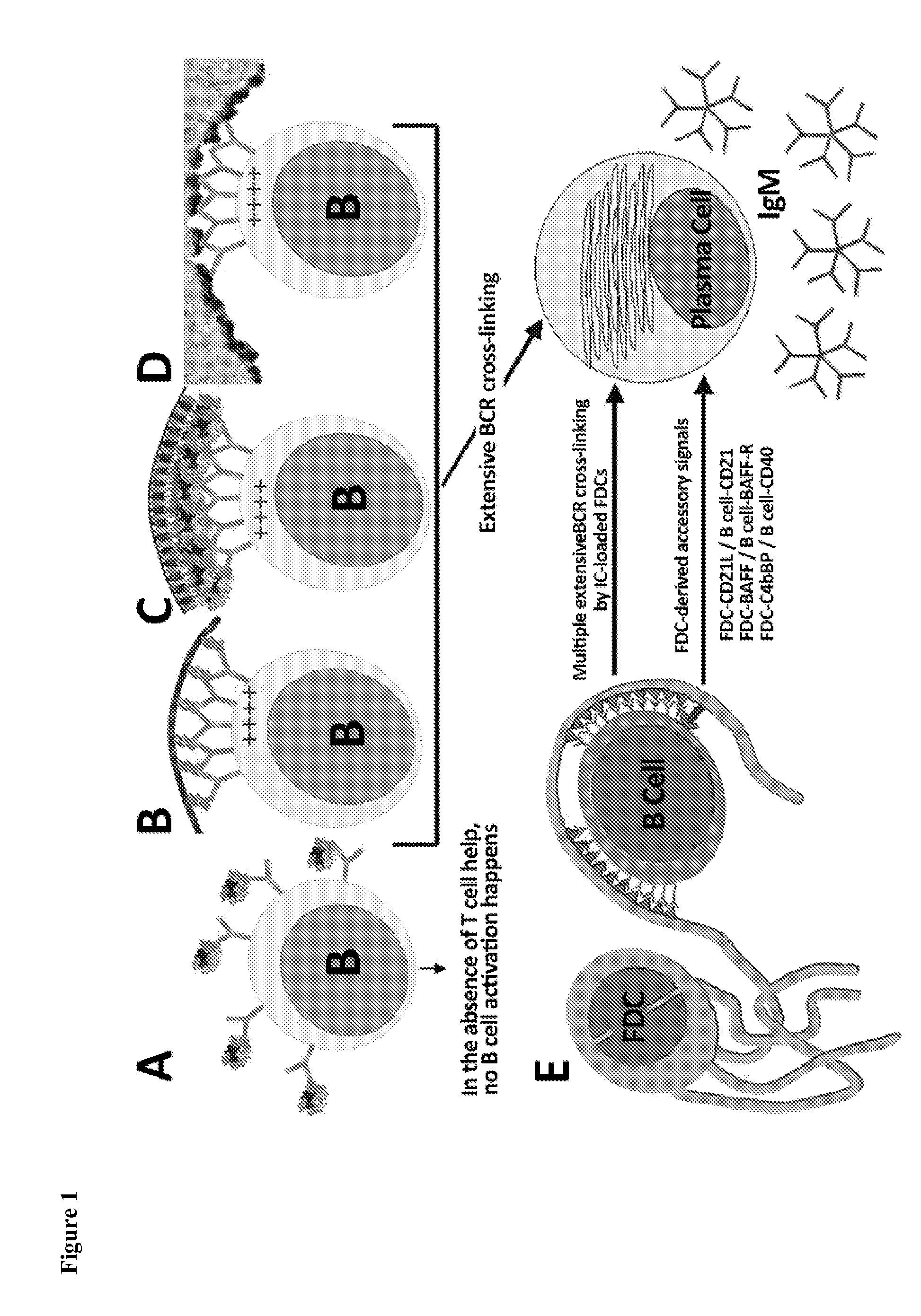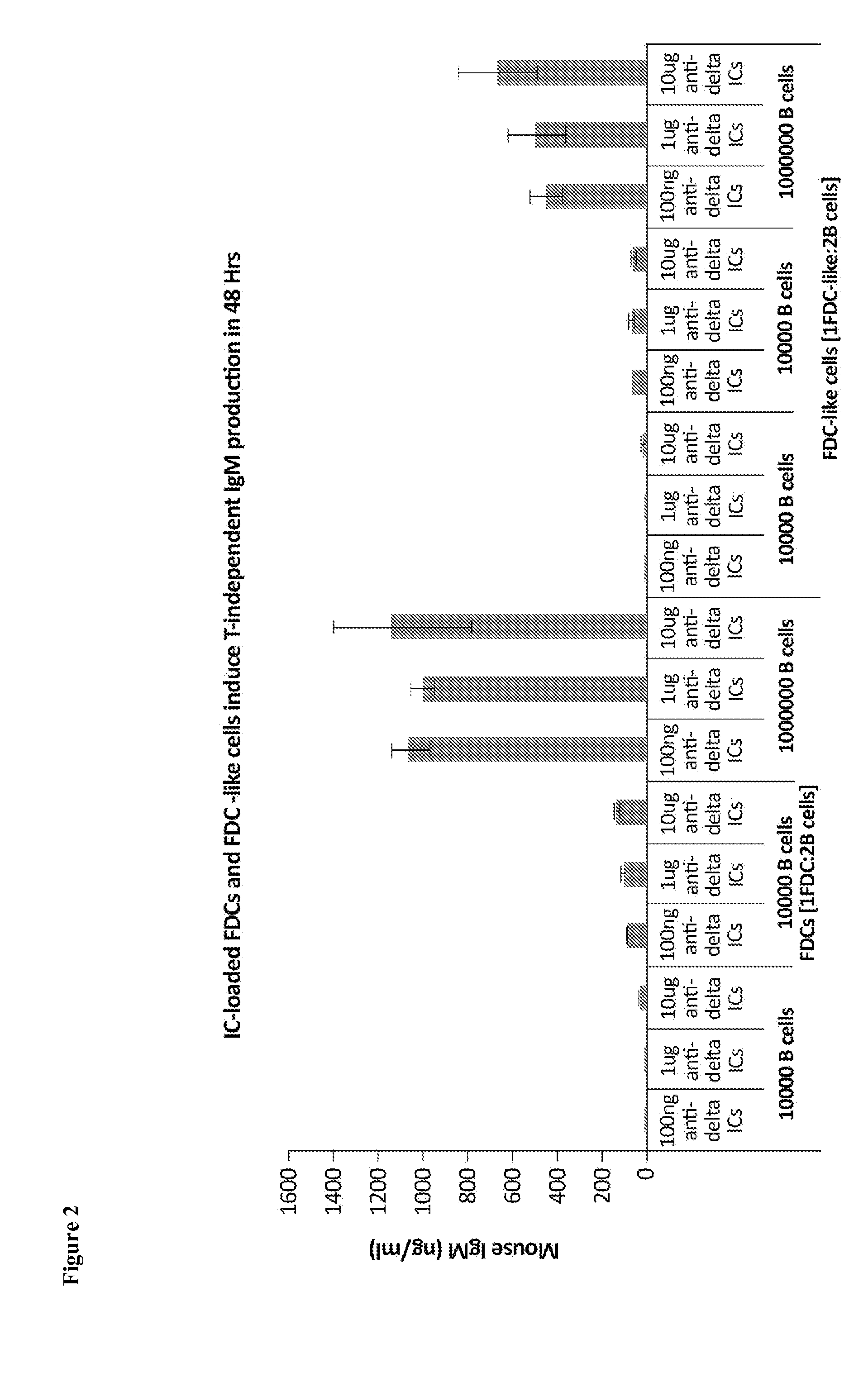Rapid generation of t cell-independent antibody responses to t cell-dependent antigens
- Summary
- Abstract
- Description
- Claims
- Application Information
AI Technical Summary
Benefits of technology
Problems solved by technology
Method used
Image
Examples
example 1
FDC-Like Cells Function Like FDCs
[0162]FDC-like cells can be derived from human monocytes using published techniques (Heinemann & Peters (2005) BMC Immunol. 6, 23; see also WO 2005 / 118779 and EP 04012622.9. Use of these FDC-like cells is an advantage over isolating FDCs from human tonsils, which are not always readily available. An alternative is isolating FDCs from secondary lymphoid tissues of animals, but isolating functionally active FDCs from secondary lymphoid tissue requires considerable skill and there are times when introducing animal cells into a human system is not acceptable. Thus, it is desirable to be able to use readily available human FDC-like cells that have accessory activity comparable with FDCs.
[0163]We examined whether FDC-like cells could trap ICs like FDCs. To test this, FDCs and FDC-like cells were incubated with labeled ICs, the cells were washed to remove unbound ICs, and incubated overnight (˜15 h). Phagocytic cells can trap ICs, but such ICs will be endoc...
example 2
Rapid In Vitro Antigenicity Assessment
[0166]Using FDCs or FDC-like cells, the in vitro GC LTE of the present invention can be used to rapidly assess the antigenicity of antigens. FDCs or FDC-like cells loaded with IC can be used to induce a rapid (˜48 h) IgM response. The B cell repertoire can be assessed, as can the antigenicity of the antigens.
example 3
Rapid In Vitro Vaccine Assessment
[0167]Using FDCs or FDC-like cells, the in vitro GC LTE of the present invention can be used to rapidly assess the antigenicity of vaccine candidates. FDCs or FDC-like cells loaded with IC can be used to induce a rapid (48 h) IgM response. The B cell repertoire can be assessed, as can the antigenicity of the antigens.
PUM
| Property | Measurement | Unit |
|---|---|---|
| Time | aaaaa | aaaaa |
| Time | aaaaa | aaaaa |
| Time | aaaaa | aaaaa |
Abstract
Description
Claims
Application Information
 Login to View More
Login to View More - R&D
- Intellectual Property
- Life Sciences
- Materials
- Tech Scout
- Unparalleled Data Quality
- Higher Quality Content
- 60% Fewer Hallucinations
Browse by: Latest US Patents, China's latest patents, Technical Efficacy Thesaurus, Application Domain, Technology Topic, Popular Technical Reports.
© 2025 PatSnap. All rights reserved.Legal|Privacy policy|Modern Slavery Act Transparency Statement|Sitemap|About US| Contact US: help@patsnap.com



